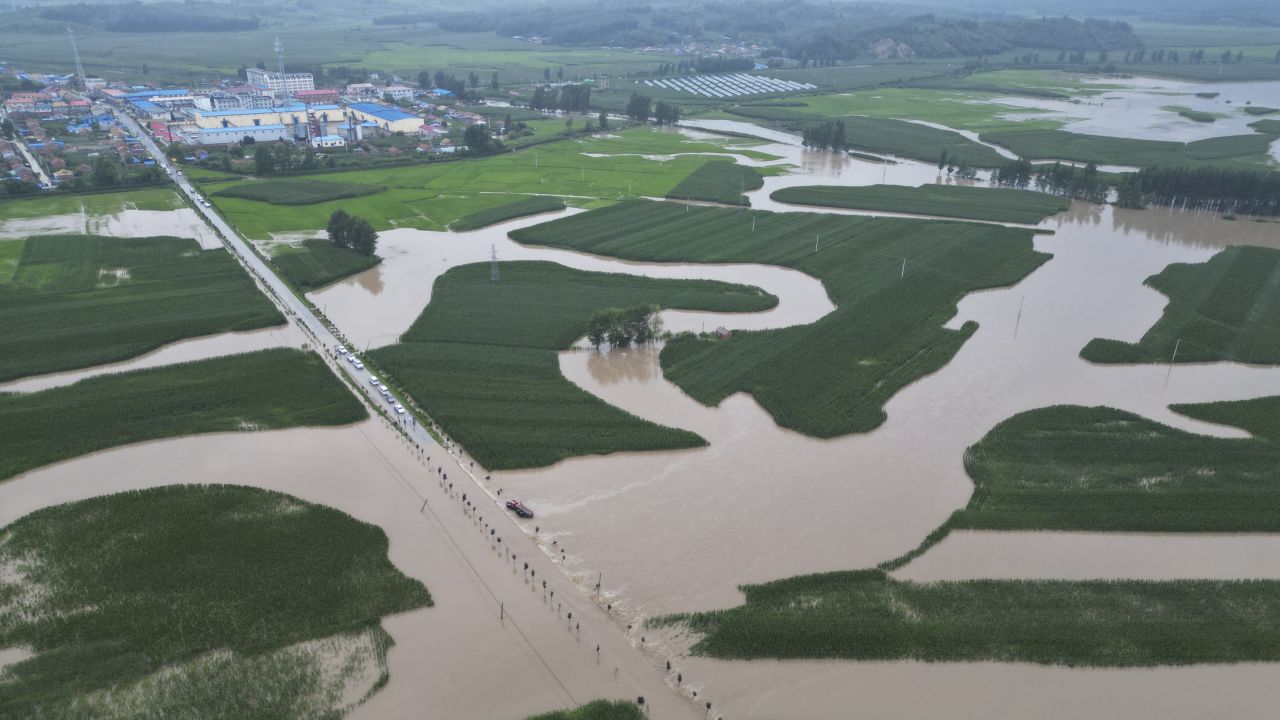Facing fury of climate change, China, triggered by two back-to-back typhoons- Typhoon Doksuri and Typhoon Khanun, finds itself at the receiving end of torrential rain, leaving a trail of death and destruction in several provinces of the country.
At least 20 people have been killed, and thousands have been displaced in several cities, including Beijing due to floods caused by the extreme rain which has broken all records of rainfall experienced by China in the past 140 years.
Standing crops in several acres of land have been damaged amidst announcement of restrictions by countries, including India on the supply of rice, throwing China in deep mire of concerns as this year, it would not be able to procure as much food stuff as much it needs to feed 140 billion people in the country.
According to China’s Ministry of Agriculture and Rural Affairs, over 10 million acres (4 million hectares) of cropland has already been hit by natural disasters, up by 1.3 million acres last year.
Havoc caused by Typhoon Doksuri has swamped China’s biggest grain producing province Heilongjiang, Reuters said, while maintaining that no farmland in the majority of provinces has been left untouched by the devastating flood. And it has occurred just a few weeks after heavy rainfall had drenched China, impacting the wheat crops in the central part of the country.
Around 30 million metric tons of wheat had been damaged in Henan, Anhui, Shanxi, and Shandong provinces due to excessive rains in May. Of this total, Henan province, popularly known as the grain bowl of China, lost more than 20 million metric tonnes of wheat.
Recently, the US National Oceanic and Atmospheric Administration announced that El Nino’s effect could remain for eight to 10 months and is likely to gradually strengthen into the Northern Hemisphere winter that will stretch into next year.
On account of extreme weather conditions, one-twelfth of China’s total rice yield declined over the last two decades, a monthly peer-reviewed academic journal ‘Nature Food’ said in its recent study.
This is happening even as farmland in China is shrinking, as rapid urbanization has polluted a large portion of the East Asian country’s soil and local governments have “sold rural land to developers,” The Washington Post said.
As per the US daily newspaper, distribution of water between northern and southern China is uneven, leaving some crop-growing regions vulnerable to droughts and others to flooding. The ongoing war in Ukraine has already threatened China’s access to wheat and fertilizers, while trade war with the US has made it difficult for Beijing to buy soybeans and other food items at cheap rates.
In 2022, China was the world’s largest importer of wheat, bringing in an estimated 12 million tonnes of wheat, said the US Department of Agriculture. The total rice imports,
from January to August 2022, reached 4.56 million tons, up 42.5% year-on-year, said China’s General Administration of Customs (GAC). It also imported 20.63 million tons of corn in 2022, as per China’s Ministry of Agriculture and Rural Affairs.
With China’s economy not in good health as trade fell about 6% and exports slumped 8.3% to $280 billion in June, while manufacturing activity fell to 49.2 in July from 50.5 in June, unemployment among youth at 20.8% crossing all past records, bad news on agriculture front has generated despondency among Chinese authorities.
China is concerned about feeding its 1.4 billion people as damage to crops due to extreme weather conditions means shelling out extra foreign currencies this year again to import rice, wheat, corn, and soybeans. Between 2000 and 2020, China’s food self- sufficiency ratio declined from 93.6% to 65.8%. In 2021, the country’s edible oil import dependency ratio reached nearly 70%, almost as high as its crude oil import dependency, American think tank, Council on Foreign Relation (CFR) said.
Experts say the impact of extreme weather conditions and continued decrease in arable land will lead to China importing more foods in coming years. Between 2013 and 2019, as per South China Morning Post, China lost more than 5% of arable land due to urbanisation, excess use of fertilizer and land neglect.
Changing food habits and consumption patterns are also responsible for the increase in food imports. According to China’ Ministry of Agriculture and Rural Affairs, the country’s 1.4 billion people every day consume 700,000 tons of grain, 98,000 tons of edible oil, 1.92 million tons of vegetables, and 230,000 tons of meat.
Together with gluttonous consumption habits, regular occurrence of extreme weather conditions has enhanced Chinese leaders’ worries about food security in China. They do not want a crisis to befall their country as seen in 1959-1961 when thirty million people died due to famine triggered starvation.
In fact, Chinese history is replete with incidents when famines have destabilised rulers. Given this, the ruling Communist Party wants to do nothing that could lead to political instability. Food security is a prerequisite in China and President Xi Jinping has in this regard called for self-reliance in food. He has linked self-reliance in food with national security by saying that “Chinese people should hold their rice bowls firmly in their own hands.” But Typhoon Doksuri and Typhoon Khanun-triggered rains have cast shadow on Chinese policy makers’ plan on the self-reliance in food production as widespread flooding has damaged crops in hundreds of hectares of agricultural land in the country.

Leave a Reply